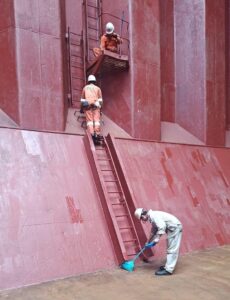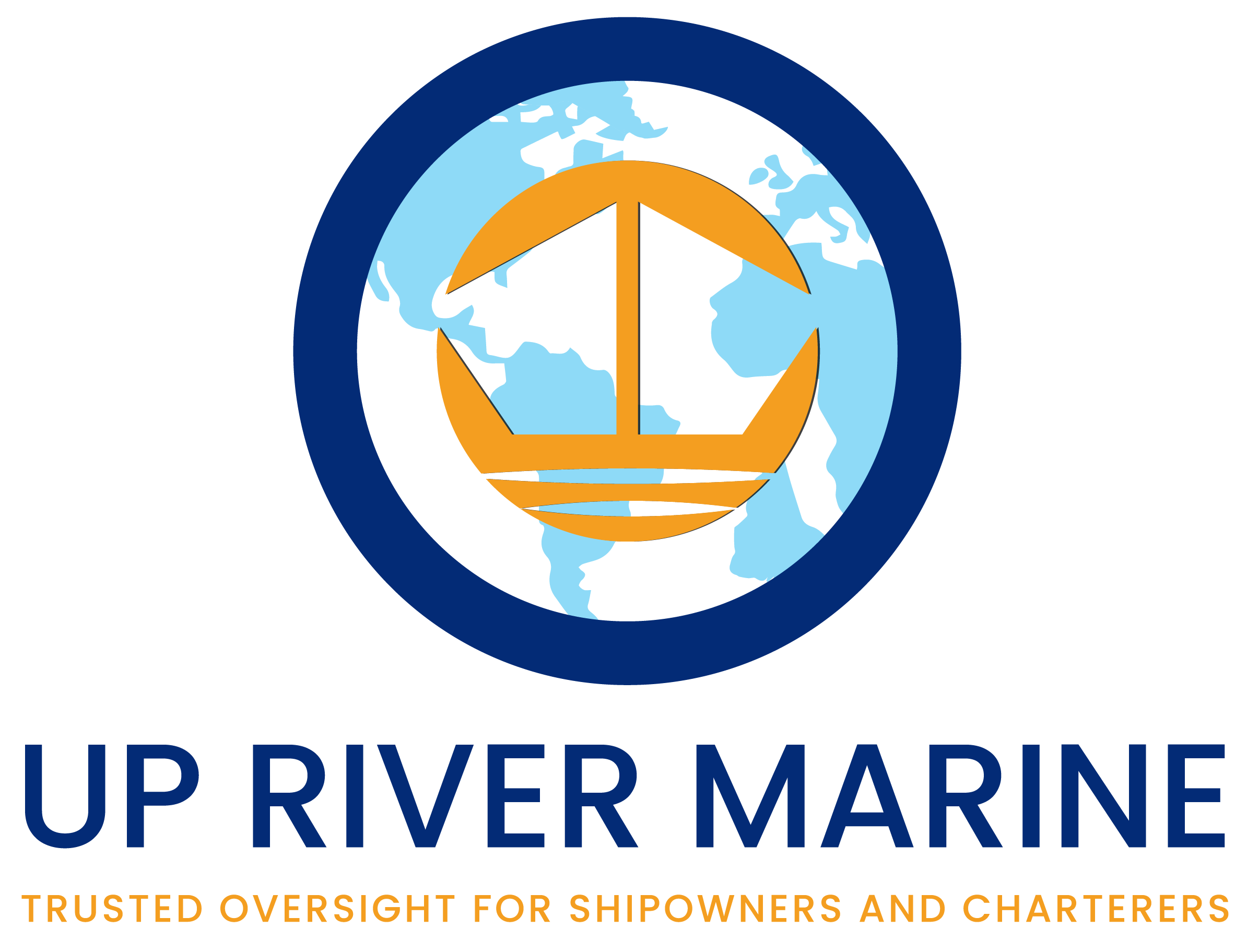Preparing a dry bulk carrier or tanker for loading is more than a matter of housekeeping: grain and oil cargoes can be tainted by residual dust, odour, rust scale, or even traces of previous cargo. Local surveyors in Argentina and the wider region routinely reject vessels that fail cleanliness inspections, causing costly delays.
This newsletter summarises internationally recognised standards (NCB’s grain‑clean definition, GAFTA and FOSFA codes) and Argentina’s SENASA criteria, and offers practical tips to pass inspections and protect your reputation.
The “Grain‑Clean” standard
The National Cargo Bureau (NCB) definition of grain‑clean is widely used by charterers and surveyors. NCB states that cargo compartments must be completely clean, dry, odour‑free and gas‑free, and that all loose scale is to be removed. This translates into four core tasks:
- Remove all cargo residues Sweep, scrape and vacuum every surface, including behind pipe brackets, ladders, deck girders and ventilation ducts.
- Eliminate loose paint and rust scale Flaking paint automatically renders a hold unfit. Even hard-adhering rust dust should be removed.
- Wash and dry thoroughly If washing is necessary, ensure all compartments — including bilges and bilge wells — are completely dry before inspection.
- Ventilate to remove odourVentilate holds after washing or painting to eliminate smells. Odour is a common reason for rejection.
SENASA’s strict inspection criteria
Argentina’s Servicio Nacional de Sanidad y Calidad Agroalimentaria (SENASA) oversees the pre‑loading inspection of grain and oil cargoes. According to local surveyors, SENASA will reject holds if any of the following are present:
- Live insects or infestation (even non-harmful species)
- Loose rust scale
- Moisture (wet surfaces or condensation)
- Damage or leakage (e.g., hydraulic oil leaks)
- Objectionable odours, including paint or cleaning smells
- Fresh paint (new coatings must cure and ventilate)
- Residues of previous cargoes, including trapped dust
- Excrement or vermin signs
- Defective hatch cover closure
P&I Clubs also warn about:
- Residues behind frames or brackets
- Rust debris in drain channels
- Unsanitary conditions (e.g., bird droppings)
- Transferable stains on covers or ladders
Best practice for cleaning grain holds
1. Remove hidden residues
Focus on difficult areas like behind frames, under girders, and in ducts. Surveyors may use a glove or hand test — any dirt is cause for rejection.
2. Treat stains and coatings
Transferable stains from coal, petcoke, or oil must be removed. Use washing, scraping, or re-coating as needed. Fresh paint must be fully cured and ventilated.
3. Maintain sanitary, dry, and Odour‑Free conditions
Remove all filth (e.g., bird droppings). Dry any moisture or condensation. Ventilate thoroughly to eliminate all chemical or paint odours. Inspect adjacent spaces for pests.
4. Final checks before arrival
Do a final sweep, wipe down condensation, and ensure tank-top dents are dry. Avoid raising dust before inspection.
GAFTA requirements for Superintendents
The Grain and Feed Trade Association (GAFTA) requires approved superintendents to confirm that holds are:
- Clean, dry, and odour-free
- Free from paint flakes, loose rust, or contaminants
- Free from residues of previous cargoes and vermin
Superintendents must also:
- Get written confirmation of the last three cargoes per hold
- Document all cleaning undertaken
- Verify that no “forbidden” cargoes (per IDTF) were previously carried
Good record‑keeping and transparency are essential.
FOSFA guidelines for edible Oil Tanks
The Federation of Oils, Seeds & Fats Associations (FOSFA) issues its own requirements for edible oils and fats.
Key points:
- Cargo handling systems: Must be stainless steel. Copper is prohibited.
- Tank coatings: Food-grade coatings are required. Remove any blisters or exposed mild steel.
- Residue removal: All previous cargo must be eliminated. Follow coating manufacturer cleaning recommendations.
- Heating and discharge: Heat gradually (max 5 °C per 24h). Keep steam pressure below 150 kPa.
- Segregation and sampling: Use segregated lines. Draw manifold, first-foot, after-loading and pre-discharge samples.
Before accepting a cargo, charterers will ask: Are the tanks suitable? What were the last three cargoes? Are any of them on the FOSFA banned list?

dues, dry holds fully, eliminate odours, and maintain strong documentation.
Documentation and Soft Skills
Presentation and professionalism matter just as much as cleanliness.
Recommended practices:
- Prepare documents: Have copies of ship particulars, crew list, previous six cargoes, cleaning methods, and stowage plan ready.
- Timing: Open hatches shortly before inspection.
- Hospitality: Offer coffee or snacks. Ensure the Master and Chief Officer attend.
- Equipment: Have brooms, brushes, mops and gloves ready for quick fixes.
High cleanliness standards protect cargo quality, and your company’s reputation.
International guidelines (NCB, GAFTA, FOSFA) and local rules (SENASA) converge on key principles: remove all resi
Thorough cleaning, inspection, and record-keeping before arrival prevent delays and demonstrate professionalism.
By following these practices, shipowners and operators can confidently present vessels for grain or oil loading, without surprises.

